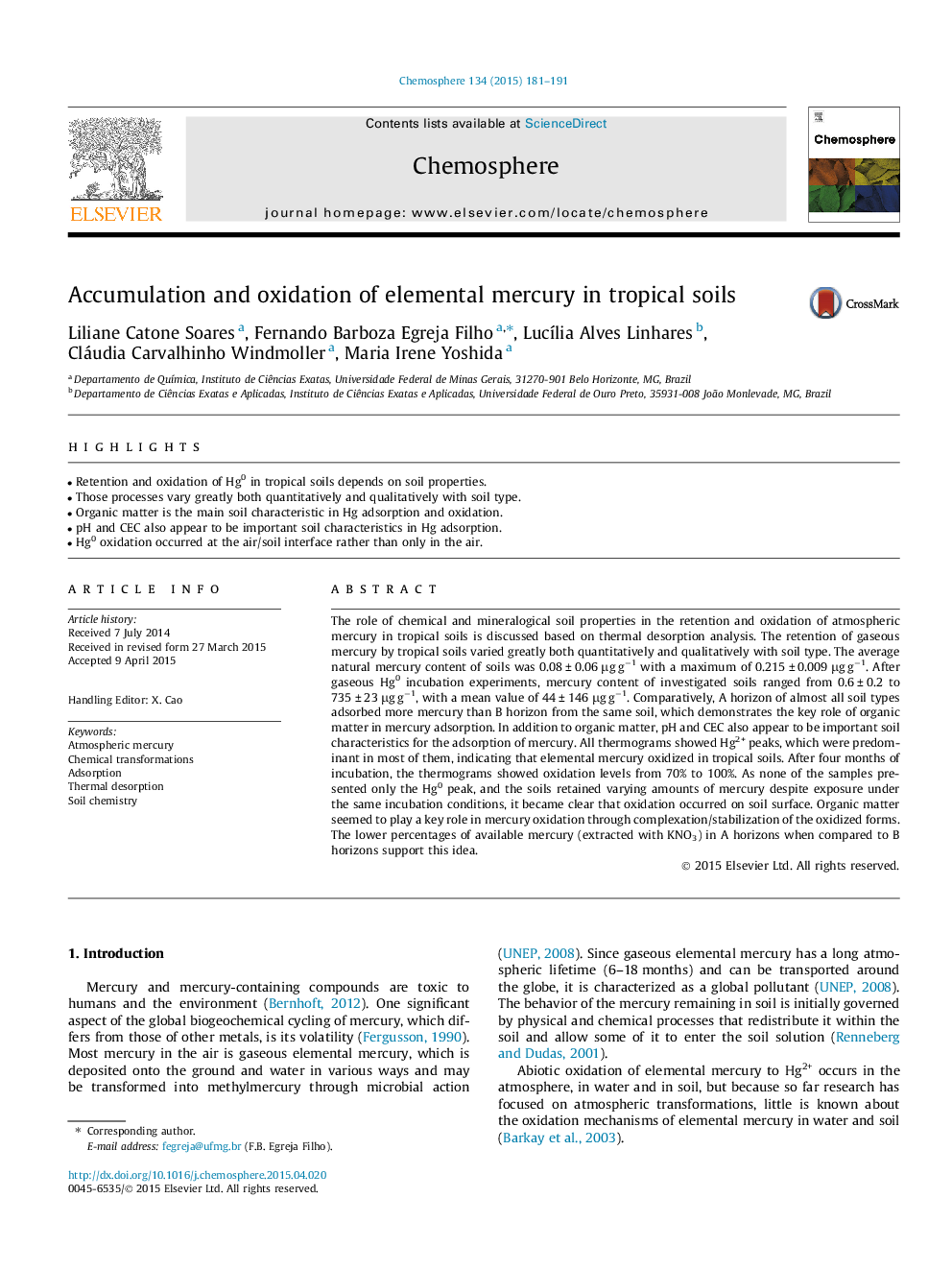| Article ID | Journal | Published Year | Pages | File Type |
|---|---|---|---|---|
| 6307645 | Chemosphere | 2015 | 11 Pages |
Abstract
The role of chemical and mineralogical soil properties in the retention and oxidation of atmospheric mercury in tropical soils is discussed based on thermal desorption analysis. The retention of gaseous mercury by tropical soils varied greatly both quantitatively and qualitatively with soil type. The average natural mercury content of soils was 0.08 ± 0.06 μg gâ1 with a maximum of 0.215 ± 0.009 μg gâ1. After gaseous Hg0 incubation experiments, mercury content of investigated soils ranged from 0.6 ± 0.2 to 735 ± 23 μg gâ1, with a mean value of 44 ± 146 μg gâ1. Comparatively, A horizon of almost all soil types adsorbed more mercury than B horizon from the same soil, which demonstrates the key role of organic matter in mercury adsorption. In addition to organic matter, pH and CEC also appear to be important soil characteristics for the adsorption of mercury. All thermograms showed Hg2+ peaks, which were predominant in most of them, indicating that elemental mercury oxidized in tropical soils. After four months of incubation, the thermograms showed oxidation levels from 70% to 100%. As none of the samples presented only the Hg0 peak, and the soils retained varying amounts of mercury despite exposure under the same incubation conditions, it became clear that oxidation occurred on soil surface. Organic matter seemed to play a key role in mercury oxidation through complexation/stabilization of the oxidized forms. The lower percentages of available mercury (extracted with KNO3) in A horizons when compared to B horizons support this idea.
Related Topics
Life Sciences
Environmental Science
Environmental Chemistry
Authors
Liliane Catone Soares, Fernando Barboza Egreja Filho, LucÃlia Alves Linhares, Cláudia Carvalhinho Windmoller, Maria Irene Yoshida,
